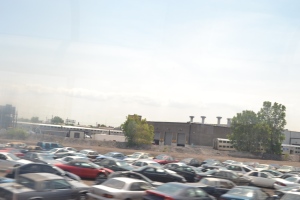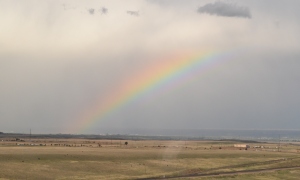A little poetic interlude:
I don’t want to talk about sustainability
I want to talk about survival
because in a state of nature
nothing unsustainable survives.
Period.
Yes, we do still live in a state of nature
that is impossible to escape
500 years of western political thought to the contrary notwithstanding.
We can’t trickfuck nature
I don’t even know what that means
to say we live outside
a state of nature.
Does it mean we no longer
eat, shit, fuck, give birth, get addicted, get old, die, or
compete compete compete
for resources shared with every other animal?
We have our habitat, our niche
which is everywhere and everything.
Lacking big teeth and claws
We have our big brains and our culture
But
our intelligence has not been great enough
nor our culture strong enough
to outrun our own arrogance.
No, I don’t believe we
will destroy the earth
unless we accidentally blow it up
of course.
However, we could easily cause our own extinction.
We are well on the way.
Did we make a terrible mistake
by the slow accident of agriculture
as we came to see ourselves
as animals no more
but imagined ourselves angels
in the great chain of being.
We created a world based entirely
on fantasies of our own identity
and lived as if our fantasies were real
and are still living as if our fantasies are real.
And in our dream we built the
great energy intensive cities
and stratified stratified stratified.
Now, awakening 10,000 years later
to the nightmare
high order multiple feedback nonlinear systems
that no one can understand much less control
yet
we keep building and growing, building and growing
with no regard for the consequences.
No-not even a knowledge
of either the magnitude of the error
or our close proximity
to the oblivion of extinction.
Yes-us
thrown on the junk pile of evolutionary history,
Yet
the tree outside the window is still photosynthesizing
and the bacteria are still busy decomposing
the remains of last night’s supper.
It all still works.
We have a civilization
built on death
but with pockets of life
and shot through with pure human creativity and magic.
Can any of this be saved?
I don’t know the answer
But I do know this.
Bees are more important
than Beethoven.









